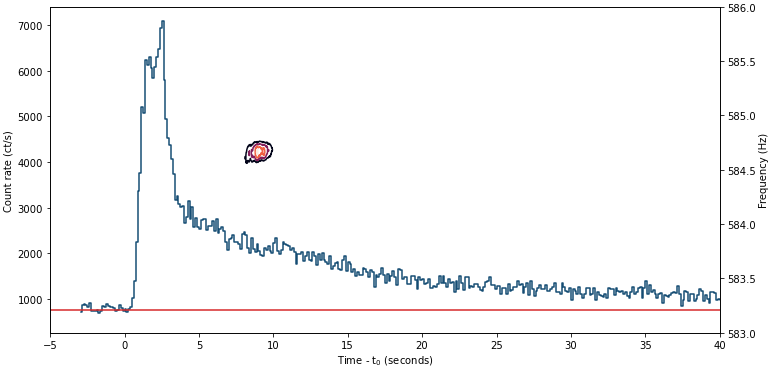NICER / ISS Science Nugget
for May 26, 2022
Reactivation of 4U 1730-22 Observed by NICER
The historic X-ray transient 4U 1730-22 was discovered in 1972 with Uhuru, the first dedicated X-ray observatory in space; since then, it remained dormant for almost 50 years, until it reactivated last year. Over the course of about 100 days, the system went through an outburst cycle that was extensively followed with NICER. Through this effort we detected a thermonuclear X-ray burst, establishing the nature of this X-ray source as an accreting neutron star (see
Weekly Summary for 15 July, 2021).
Rather unexpectedly, 4U 1730-22 returned to a bright state in early 2022. Thanks to continued NICER monitoring, we have now recorded eleven more (and counting) X-ray bursts from this system, providing a rich dataset with which we can investigate its nature in much more detail. As one part of this ongoing investigation, we are looking for periodicities in the X-ray burst emission, as such signals can reveal oscillation modes of the central neutron star. An oscillation was detected in one burst at a period of 1.7 milliseconds, very likely reflecting the extremely rapid rotation rate of the neutron star.

Figure: The blue curve shows detected counts (left axis label) as a function of time for one of the thermonuclear bursts NICER observed from 4U 1730-22. The round contours shown at roughly 10 seconds indicate the frequencies (right axis label) of detected pulses for a short period of time during the burst's decaying tail. These frequencies are centered at about 588 Hz, or equivalently a pulse period of 1.7 milliseconds, which is likely the spin period of this neutron star.
<< Previous
Main Index